Excerpts from Jim Conrad's
Naturalist Newsletter
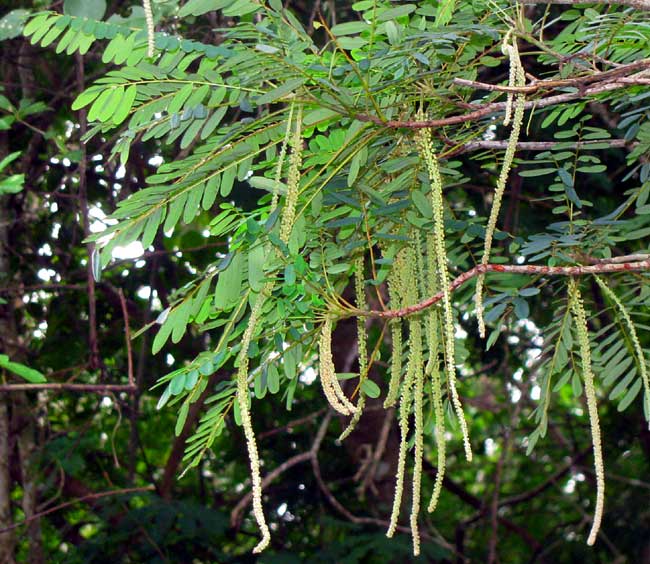
from the December 27, 2009 Newsletter issued from Hacienda Chichen Resort beside Chichén Itzá Ruins, central Yucatán, MÉXICO
ALVARADOA'S LONG, SLENDER "WORMS"
Just when I began thinking that for the rest of the dry season the woods might not serve up more trees doing interesting flowering or fruiting -- during the dry season many things go into "suspended animation" because of lack of water -- this week a certain tree species suddenly came online putting on a real show with its abundant "dangling worms," as shown above.
We called it Alvaradoa in Chiapas because I couldn't find a good English name, and I still can't. It's ALVARADOA AMORPHOIDES of the same family, the Simarubaceae, as the Ailanthus or Tree-of-heaven, which is a native of China gone wild in much of North America.
The "worms" dangling so conspicuously on the trees now are 10-inch-long (24 cm) racemes of male flowers, for Alvaradoa trees are unisexual, or "dioecious." You can see some male flowers consisting of only a green calyx on a pedicel from which arise five hairy-filamented stamens and some slender, hair-like staminodia below:
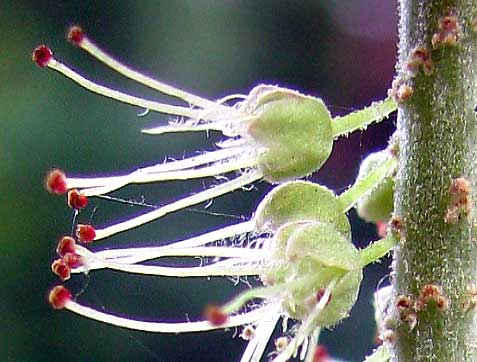
If boy trees are flowering there must be girl ones in the vicinity, and such was the case, as shown below:
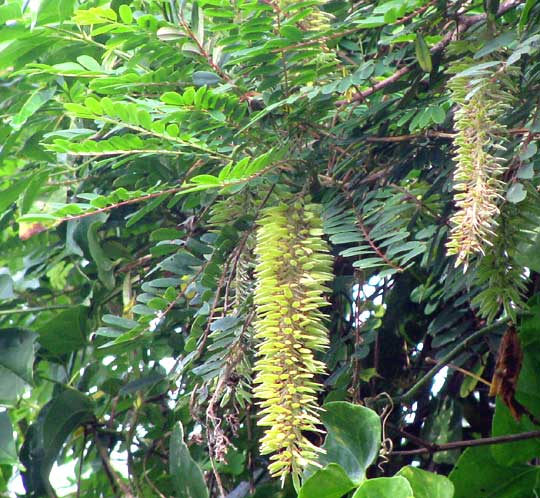
As with the Ailanthus or Tree-of-heaven, Alvaradoa fruits are samaras, which means that they are dry, winged fruits that don't split open when mature. Thus the flattish, scale-like items stacked atop one another in the last picture are ovaries on their ways to becoming winged samaras. A close-up showing them is below:
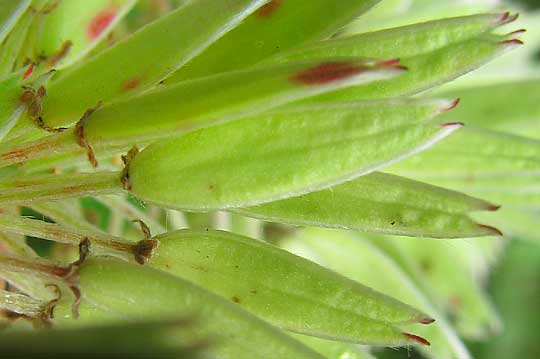
Each of those green pod-like things is an ovary. To the left each ovary arises from a brown, drying-out calyx, and each calyx arises from an enlarging pedicle, or stem. At the ovary's top -- right in the picture -- the purplish lines are the ovaries' stigmatic zones where pollen lands and germinates.
Maximino Martinez's Las Plantas Medicinales de México reports that here in the Yucatan people brew a tea of Alvaradoa's bark to treat the itch, and a similar brew of the interior bark is used as a stomach tonic.
Alvaradoas are fairly common in much of Mexico and their production of drooping samaras is prolific. I've watched seed-eating birds such as finches eat a lot of these fruits at the end of the dry season when other foods are scarce, so this is a very important species ecologically.
from the March 24, 2008 Newsletter issued from Mexico's Southernmost State, CHIAPAS
ALVARADOAS FRUITING
Throughout much of hot, dry, scrubby Mexico right now a tree growing to 30 feet tall is fruiting so prolifically and conspicuously that you can hardly miss it. It's the Alvaradoa, sometimes called Mexican Alvaradoa in the US, where it may barely extend across the border into southern Arizona. It's ALVARADOA AMORPHOIDES of the mostly tropical Quassia Family, the Simarubaceae. In North America the best-known Quassia-Family member is the invasive Ailanthus, or Tree-of-Heaven, introduced from eastern Asia. You can see a fruiting branch of an Alvaradoa near my dwelling below:
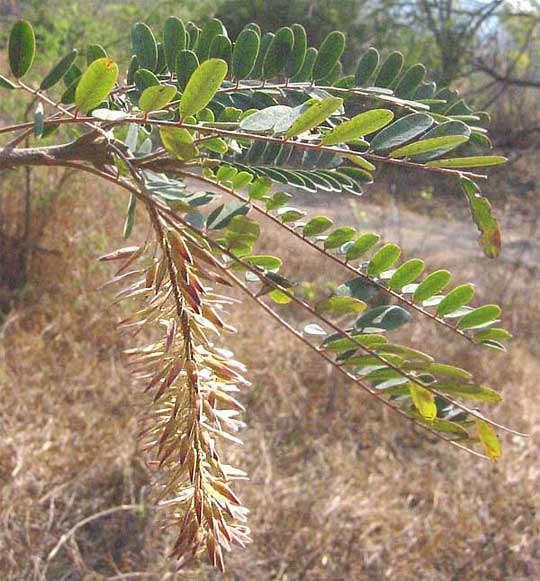
With its pinnately compound, Black-Locust-like leaves at first glance it looks like a member of the Bean Family. However, its fruits, instead of being legumes containing beans, are dry samaras like ash fruits. A samara is a winged fruit that doesn't split open -- it's "indehiscent." Alvaradoa's male and female flowers grow on separate trees, so the trees are "dioecious."
Plantas Medicinales de México reports the use of a tea brewed from the bark to cure the itch, and a tea of its interior wood used as a stomach tonic.
Issued on March 9, 2020 Newsletter issued from Tepakán, Yucatán, MÉXICO
RED FRUITS
The fruit clusters remain on trees for weeks, changing from greenish to straw color. For some reason I seldom see them in the red stage I've read about, but this week one small tree at the sheltered forest edge bore what's seen below:
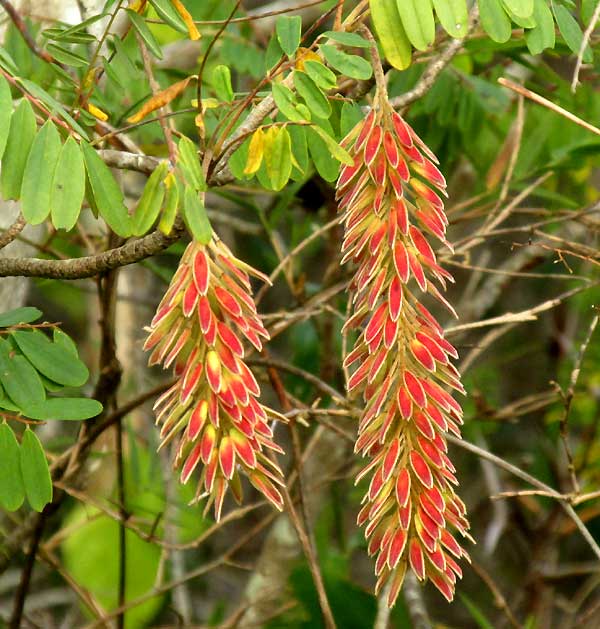
These week many such fruiting clusters have been blown by strong winds onto the forest floor, but they were all straw colored.